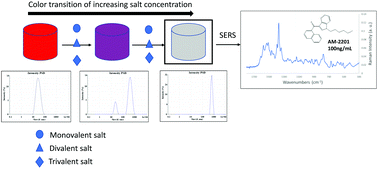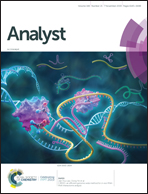An evaluation of monovalent, divalent, and trivalent cations as aggregating agents for surface enhanced Raman spectroscopy (SERS) analysis of synthetic cannabinoids
Abstract
In this study monovalent, divalent, and trivalent chloride, sulfate and nitrate salts were examined to determine the critical coagulation concentration (CCC) for each salt and its corresponding effect on detection limits for SERS analysis of cannabinoid extracts. The CCC of each salt was determined using UV-vis, particle size and zeta potential measurements. The results demonstrated that the divalent and trivalent cations produce a lower CCC when compared to monovalent cations. The data indicate the effect that cation valence has on nanoparticle destabilization. This information is essential because it permits the user to develop optimal conditions for aggregation of salts used in SERS. Tests were then performed to determine the best conditions for SERS detection of a small set of cannabinoids with naphthyl indole moieties. The results demonstrate the importance of salt concentration for colloid aggregation and illustrate the effect of aggregation on sensitivity for the SERS experiment.



 Please wait while we load your content...
Please wait while we load your content...